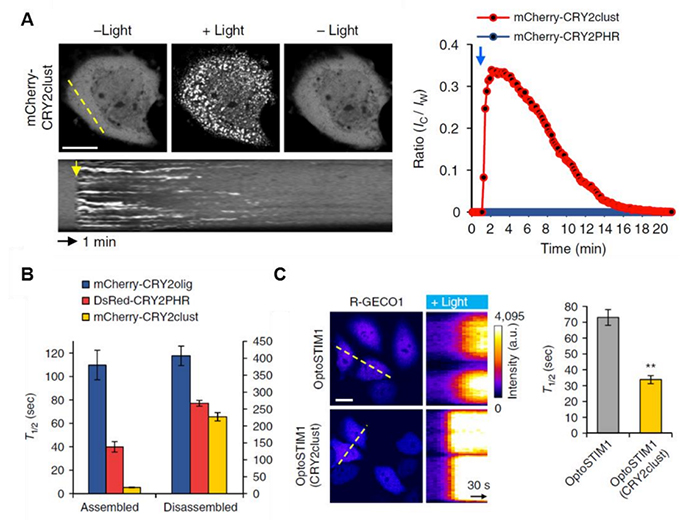Professor Won Do Heo’s research team has developed a new optogenetic technique, named “CRY2clust”, to trigger protein clustering in response to blue light. This new method has a much faster response and higher sensitivity to light than existing tools. Protein clustering is among the essential molecular mechanisms that control various signaling proteins, such as membrane receptors, kinases, and transcription factors. Therefore, this new technique could be useful for advancing our understanding of innumerable molecular and cellular mechanisms.
CRY2clust is based on a photoreceptor protein, cryptochrome 2 (CRY2), which is derived from the plant Arabidopsis thaliana. CRY2 is known to assemble in response to blue light. Professor Won Do Heo’s group has engineered CRY2 to maximize its performance, resulting in tagging of nine amino acid residues. In comparison with other CRY2-derived
optogenetic systems, CRY2clust triggers faster protein association and dissociation in relation to blue light. In addition, it is functional at lower blue light sensitivity. The rapid clustering of CRY2clust improved the dynamics of previously reported CYR2-based optogenetic modules, such as OptoSTIM1 and Raf1.
The group expects that this new CRY2 module will expand the versatility of the optogenetic clustering toolbox and enable users to design precise methods for their specific experimental purposes.

kymograph corresponding to the yellow line in the top left image. (B) Graph showing time to reach
half-maximal and basal cluster ratio (T1/2) for assembly and disassembly, respectively. (C)
Improved dynamics of OptoSTIM1 by applying CRY2clust.
Heo, Won Do (Dept. of Biological Sciences)
Homepage: https://sites.google.com/site/heolab/
E-mail: wondo@kaist.ac.kr






